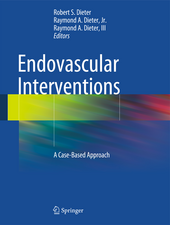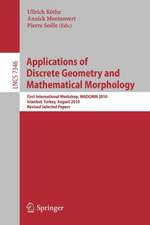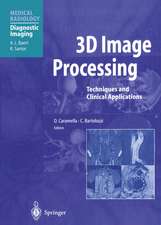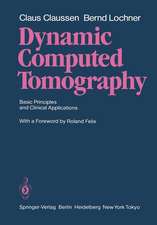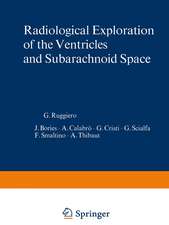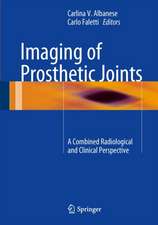Mathematical Morphology and Its Applications to Image Processing: Computational Imaging and Vision, cartea 2
Editat de Jean Serra, Pierre Soilleen Limba Engleză Paperback – 14 oct 2012
MM is not only a theory, but also a powerful image analysis technique. The purpose of the present book is to provide the image analysis community with a snapshot of current theoretical and applied developments of MM. The book consists of forty-five contributions classified by subject. It demonstrates a wide range of topics suited to the morphological approach.
Din seria Computational Imaging and Vision
- 20%
 Preț: 658.52 lei
Preț: 658.52 lei - 20%
 Preț: 993.09 lei
Preț: 993.09 lei - 20%
 Preț: 648.59 lei
Preț: 648.59 lei - 15%
 Preț: 654.62 lei
Preț: 654.62 lei - 5%
 Preț: 736.03 lei
Preț: 736.03 lei - 5%
 Preț: 374.20 lei
Preț: 374.20 lei - 15%
 Preț: 583.24 lei
Preț: 583.24 lei - 20%
 Preț: 331.08 lei
Preț: 331.08 lei - 20%
 Preț: 653.71 lei
Preț: 653.71 lei - 18%
 Preț: 1224.36 lei
Preț: 1224.36 lei - 15%
 Preț: 665.73 lei
Preț: 665.73 lei - 20%
 Preț: 651.57 lei
Preț: 651.57 lei - 20%
 Preț: 653.38 lei
Preț: 653.38 lei - 20%
 Preț: 657.83 lei
Preț: 657.83 lei - 5%
 Preț: 671.03 lei
Preț: 671.03 lei - 20%
 Preț: 373.21 lei
Preț: 373.21 lei - 20%
 Preț: 351.69 lei
Preț: 351.69 lei - 20%
 Preț: 650.59 lei
Preț: 650.59 lei - 20%
 Preț: 996.40 lei
Preț: 996.40 lei - 20%
 Preț: 558.58 lei
Preț: 558.58 lei - 5%
 Preț: 737.11 lei
Preț: 737.11 lei - 15%
 Preț: 657.39 lei
Preț: 657.39 lei - 20%
 Preț: 344.60 lei
Preț: 344.60 lei - 15%
 Preț: 654.43 lei
Preț: 654.43 lei -
 Preț: 411.80 lei
Preț: 411.80 lei - 20%
 Preț: 341.63 lei
Preț: 341.63 lei - 20%
 Preț: 360.60 lei
Preț: 360.60 lei
Preț: 593.48 lei
Preț vechi: 741.85 lei
-20% Nou
Puncte Express: 890
Preț estimativ în valută:
113.58€ • 123.33$ • 95.40£
113.58€ • 123.33$ • 95.40£
Carte tipărită la comandă
Livrare economică 22 aprilie-06 mai
Preluare comenzi: 021 569.72.76
Specificații
ISBN-13: 9789401044530
ISBN-10: 9401044538
Pagini: 396
Ilustrații: IX, 385 p.
Dimensiuni: 160 x 240 x 21 mm
Greutate: 0.55 kg
Ediția:Softcover reprint of the original 1st ed. 1994
Editura: SPRINGER NETHERLANDS
Colecția Springer
Seria Computational Imaging and Vision
Locul publicării:Dordrecht, Netherlands
ISBN-10: 9401044538
Pagini: 396
Ilustrații: IX, 385 p.
Dimensiuni: 160 x 240 x 21 mm
Greutate: 0.55 kg
Ediția:Softcover reprint of the original 1st ed. 1994
Editura: SPRINGER NETHERLANDS
Colecția Springer
Seria Computational Imaging and Vision
Locul publicării:Dordrecht, Netherlands
Public țintă
ResearchCuprins
Theory.- Set operator decomposition and conditionally translation invariant elementary operators.- Mutational equations of morphological dilation tubes.- Thresholdings, umbrae, residuals, and surpluses of l-images.- Filtering.- Adaptive parameterized openings.- Synthesis of adaptive weighted order statistic filters with gradient algorithms.- A spatially variant, locally adaptive, background normalization operator.- Using genetic algorithms in the design of morphological filters.- Minimal generator basis of a finite structural opening.- Segmentation.- Watershed, hierarchical segmentation and waterfall algorithm.- Minimum spanning forests for morphological segmentation.- The flat zone approach and color images.- Joint region and motion estimation with morphological tools.- Morphological segmentation of image sequences.- Sampling.- Critical morphological sampling and applications to image coding.- A sampling approach based on equicontinuity.- Coding.- Application of morphological filters for contour image sequence coding.- The geodesic morphological skeleton and fast transformation algorithms.- Multi—parameter skeleton decomposition.- Representations and slope transform.- Morphological systems theory: slope transforms, Max—Min differential equations, envelope filters, and sampling.- Two dual representations of morphology based on the parallel normal transport property.- Dominance and incidence structures with applications to stochastic geometry and mathematical morphology.- Granulometries and shape description.- The multiscale morphology decomposition theorem.- Statistical pattern spectrum for binary pattern recognition.- Generalized geodesic distances applied to interpolation and shape description.- Random models and tessellations.- Performance analysis of amorphological Voronoï tessellation algorithm.- Optimization in Voronoï diagrams.- A stochastic tessellation of digital space.- Liquid phase sintered materials modelling by random closed sets.- Monte-Carlo estimation of morphological granulometric discrete size distributions.- Algorithmic techniques.- On the implementation of morphological operations.- An evaluation of priority queues for mathematical morphology.- One pixel thick skeletons.- Fast grayscale granulometry algorithms.- An efficient implementation technique of adaptive morphological operations.- Implementation of a distributed watershed algorithm.- Visualization of Minkowski operations by computer graphics techniques.- Morphogenesis simulations with lattice gas.- Biological applications.- Single object geometry — the stereology of registered serial sections.- Texture classification using neural networks and local granulometries.- Fusion of MR and CT images of the human brain using multiresolution morphology.- Morphological scheme for morphometric analysis of epidermal biopsy images.- Automatic quantification of spine parameters from X—ray images by means of morphological tools.- Industrial and remote sensing applications.- Image Processing: a key to success in industrial applications.- Radar images analysis using morphological filters.- Application of morphological operators to supervised multidimensional data classification.- Appendix A.- The “Centre de Morphologie Mathémathique”: an overview.- Appendix B.- List of posters contributions presented at ISMM’94.- Author Index.





